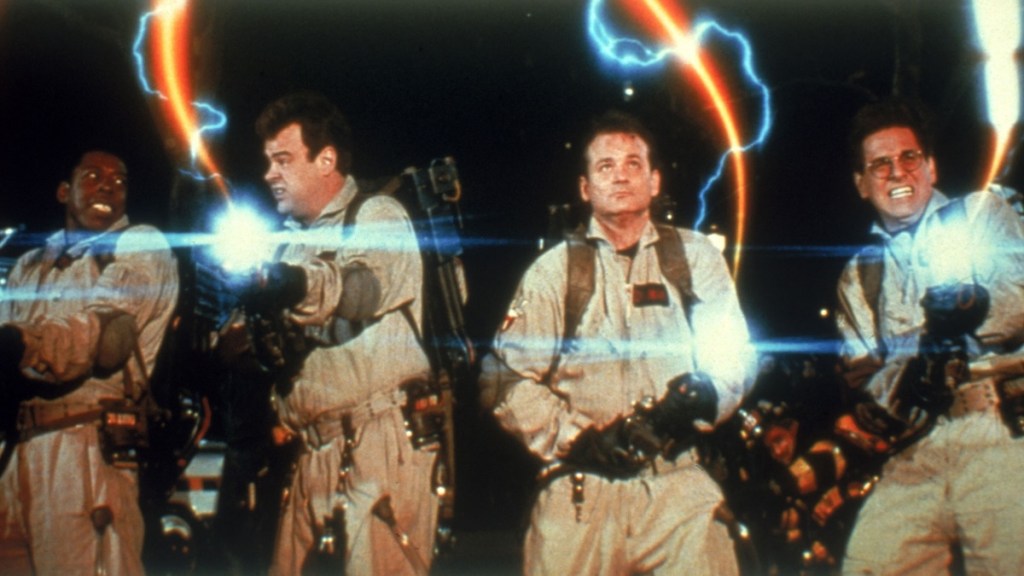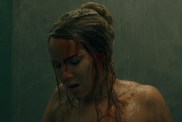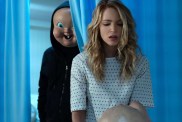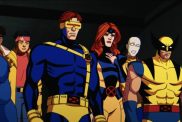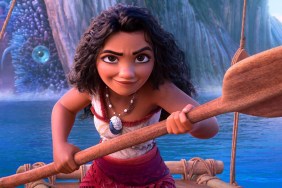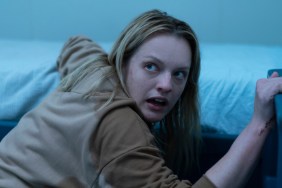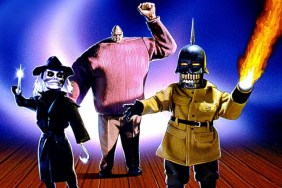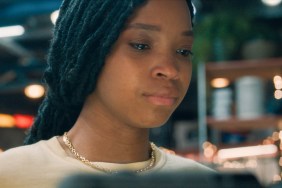As we prepare for the latest ghost-busting adventure, Ghostbusters: Frozen Empire, I’m looking back at two sequels in the long-running franchise: Ghostbusters 2016 and Ghostbusters II. You can read about the former here, but now it’s time to get honest about the 1989 follow-up to Ivan Reitman’s blockbuster.
Making a successful sequel to a classic comedy is damn near impossible. The Sting II, Caddyshack II, The Hangover Part II, Dumb and Dumber To, Anchorman 2: The Legend Continues, and Airplane II: The Sequel are a few examples of anticipated continuations gone wrong. On occasion, a studio might strike gold twice. The Naked Gun 2 1/2: The Smell of Fear and Austin Powers: The Spy Who Shagged Me are equal to, if not better than, their predecessors. At the same time, one could argue in favor of National Lampoon’s Christmas Vacation, Addams Family Values, and Gremlins 2: The New Batch as superior offerings.
Ghostbusters II falls somewhere between a modest follow-up and a bad sequel. It’s not a terrible film, but there’s nothing remarkable about it — and this is coming from a huge fan of the IP.
In 1989, perhaps the greatest moviegoing summer of all time, only two films existed in my young mind: Batman and Ghostbusters II. Tellingly, I was more enamored of the animated Real Ghostbusters series than Reitman’s film. My love for Ghostbusters 84 grew over time through countless rewatches, but in the late 80s, the cartoon adventures of Peter, Ray, Egon, and Winston were all the rage, if only for a brief spell. I recall watching an episode each morning before heading to school, donning my backpack as a makeshift proton pack, and surrounded by various toys, notably Ecto-1.
Even so, when I caught the first Ghostbusters II teaser, my PKE readings exploded through the roof.
Another Ghostbusters? Are you kidding me? The hype was on. I proudly hung the poster on my wall and devoured magazines that delved into every detail of the film. I vividly remember stumbling upon a discarded Ghostbusters II plastic cup on the roadside, bringing it home, thoroughly washing it, and using it religiously every night for months. Gross, I know.
We saw the flick on opening weekend … I liked it, mostly. Even at that age, my movie brain overanalyzed everything. I recall despising Randy Edelman’s score and bemoaning the film’s lack of grit. The absence of smoking, swearing, and drinking was glaringly noticeable. I rolled my eyes through the corny ending, which paled compared to the original’s action-packed finale. Granted, I liked Ghostbusters II enough to watch it quite a bit over the years, but each viewing produced the same tepid reaction, and inevitably, it would find its way back onto the shelf for a year or two.
On the positive side, some of it works well. Murray delivers a good performance despite sleepwalking through most of the picture. The early scenes highlighting the careers of our ghost-busting pals produce a few hearty laughs, notably Murray’s ridiculous World of the Psychic TV show.
The now famous courtroom scene holds up well:
And that underground tunnel bit induces a few chills:
I’m also fond of Peter MacNicol’s possessed museum curator, Janosz, who gets a few great moments between the various set pieces:
Rick Moranis nearly steals the show despite his character’s innocuous presence in the story:
The positives justify an occasional viewing. However, it also feels oddly toothless, aimed more at families and younger audiences. By 1989 standards, a PG rating felt disappointingly tame, especially compared to Tim Burton’s darker Batman. The cool films of the time typically carried a PG-13 or R rating, leaving our proton-packed heroes in the dust.
What happened? How did an edgy comedy morph into something safe enough for toddlers?
The Real Ghostbusters. That’s what happened.
In the years between Ghostbusters 84 and Ghostbuster II, the cartoon series The Real Ghostbusters took hold. Earlier, I mentioned how my fondness for the weekly 20-minute cartoon series trumped my adoration for the Ghostbusters film — that’s no lie. I friggin’ loved that show. All my friends did, too. (Ironically, the first few seasons contain more edge than most horror films.)
Columbia Pictures faced a sudden dilemma: should they cater to the same adult audience that propelled the original Ghostbusters to monumental success, or should they pivot to tap into the potentially lucrative younger demographic that could skyrocket merchandise sales? Oddly, they tried to do both and ultimately pleased no one.
Ghostbusters II started strong with a then phenomenal $29M opening weekend but quickly fell out of the Top 10 and finished with $112M domestically, less than half of the $242M earned by Ghostbusters five years earlier. A crowded marketplace dampened its receipts, but no one walked away with much enthusiasm, even my ever-so-easy-to-please family. Again, none of us hated Ghostbusters II, but we also forgot about it 15 minutes after we left the theater.
“Who you gonna call?” wrote Roger Ebert. “Script doctors, that’s who. Aside from a few spasms of ectoplasmic invention (the Titanic docks in New York harbor about 65 years too late), this sequel to the hilarious 1984 hit smells of found money. That is, nobody really wanted to do it, but nobody could say no to an assured box-office bonanza.”
Reitman and writers Dan Aykroyd and Harold Ramis caved to studio pressure to rework the sequel as a family film. Except by sanitizing Ghostbusters II, the producers removed what made the original a novelty. Reitman effectively emulated Steven Spielberg’s approach, crafting an adult-oriented comedy that appealed to kids rather than the reverse. Even at a young age, I recognized and bemoaned the distinction between the two films.
Vigo the Carpathian doesn’t provide much threat, and the bad vibes slime concept never gels. Our core group behaves more like classic heroes destined to save the world than average Joes looking for a break. Gone is the crass adult humor, not-so-subtle sexuality, and roguish charm of the original.
Ghostbusters II killed the franchise
No, really. Interest in Ghostbusters dropped like a rock following the sequel, replaced by Batman and Teenage Mutant Ninja Turtles. The animated series slowly faded into obscurity, and I don’t recall anyone asking for another sequel.
That’s probably for the best. Ghostbusters was never meant to evolve into anything more than a robust, high-concept 80s comedy. Despite this, Hollywood continually attempts to transform the franchise into the next Avengers-esque blockbuster series.
It won’t work. The concept of catching ghosts is unique enough to produce exciting cinema; however, just like with almost every reboot of an 80s franchise, the creators of every Ghostbusters film seem unable to break free from the shadow of the original. Even Ghostbusters 2016 mirrored Reitman’s original beats while somehow simultaneously undermining it. While the 2020 installment, Ghostbusters: Afterlife, holds onto the original so tightly that it feels like sacred scripture.
Bustin’ feels good after all these years, but as Ghostbusters II demonstrated, sometimes it’s best to leave well enough alone. No one would ever capture the original’s stroke of genius, even the powers behind said genius, and every subsequent entry, including the latest Frozen Empire, feels like a bad case of diminishing returns.
As Dan Aykroyd once said in a cameo for another meager ghost feature: “Who ya gonna call? Someone else.”
